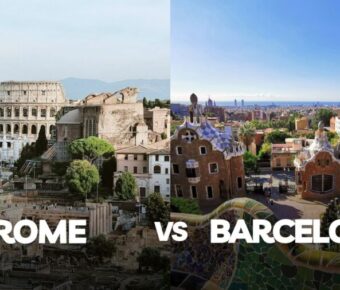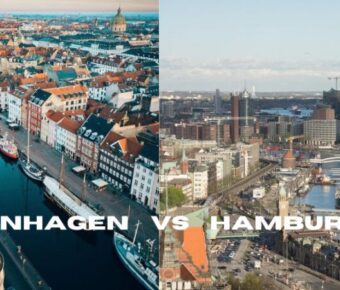
Quepos vs Manuel Antonio: 5 Key Differences to Know Before Your 2025 Costa Rica Vacation
When planning your Costa Rica trip, you might wonder whether to stay in Quepos or Manuel Antonio. These neighboring destinations offer very different experiences despite being just 15 minutes apart by car.
Manuel Antonio is the more scenic, nature-focused tourist town with closer access to the famous national park. At the same time, Quepos functions as a regular Costa Rican town with fewer tourist amenities but more budget-friendly options.
Many travelers don’t realize that Manuel Antonio refers to the national park and the surrounding tourist area. The park doesn’t offer accommodations, but the area near the park entrance has developed into a hub with hotels, restaurants, and tour operations. Quepos, meanwhile, gives visitors a glimpse into everyday Costa Rican life away from the tourist bubble.
Your choice depends on what you want from your Costa Rica experience. Nature lovers and first-time visitors typically prefer staying in Manuel Antonio for its scenic beauty and proximity to wildlife. Budget travelers or those seeking a more authentic local experience might find Quepos appealing, with its lower prices and small-town atmosphere.
Table of Contents
- Exploring Quepos and Manuel Antonio
- Geographical Context
- Historical Significance
- Manuel Antonio National Park
- Flora and Fauna
- Conservation Efforts
- Visitor Information
- Beaches of Manuel Antonio
- Manuel Antonio Beach
- Activities and Water Sports
- Conservation and Cleanliness
- Accommodation and Dining
- Hotels and Resorts
- Local Cuisine and Restaurants
- Breakfast With a View
- Tourism Dynamics
- Peak and Off-Peak Seasons
- Cultural Interactions
- Economic Impact
- Planning Your Visit
- Best Time to Visit
- Getting Through
- Local Transportation
- Frequently Asked Questions
- What are the unique differences between Quepos and Manuel Antonio for travelers?
- How does the safety in Manuel Antonio compare to Quepos for tourists?
- What are the top accommodations in Manuel Antonio that are outside standard hotels?
- Can you provide insights on the nighttime safety for visitors staying in Quepos?
- What lesser-known attractions should one consider visiting instead of Manuel Antonio?
- Is it recommended that one base oneself in Quepos for an authentic Costa Rican experience?
- Book Your Dream Experience
- More Travel Guides
Exploring Quepos and Manuel Antonio
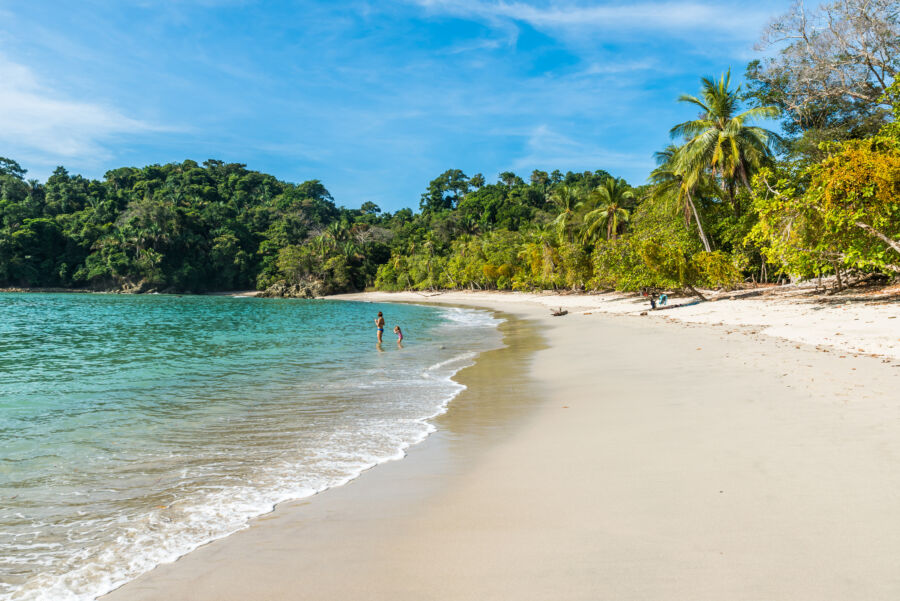
Quepos and Manuel Antonio offer distinct experiences for visitors to Costa Rica’s Pacific Coast. These neighboring destinations complement each other with their unique characteristics and attractions.
Geographical Context
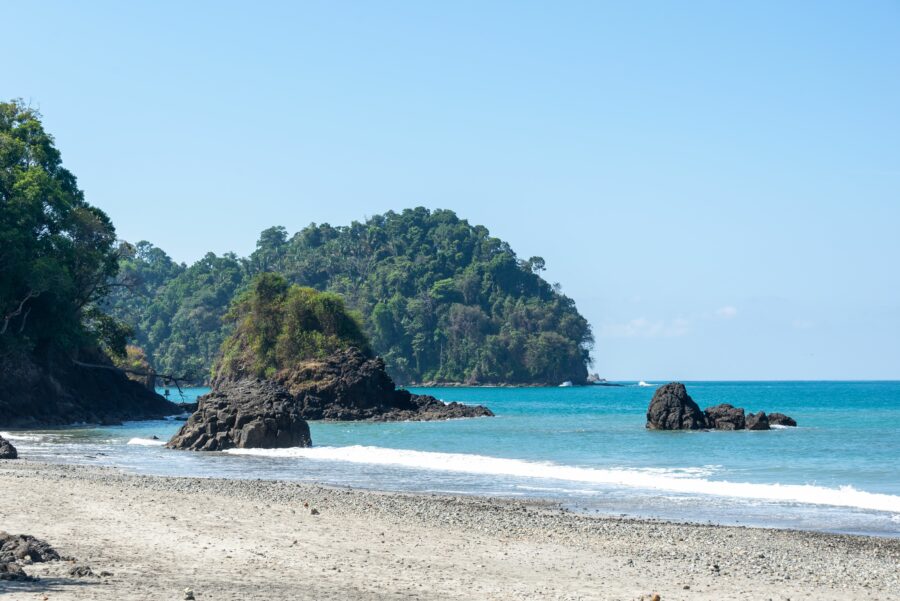
Quepos is located on Costa Rica’s Pacific Coast and is primarily a fishing town with a marina. It’s just a few kilometers from Manuel Antonio, but the two areas feel worlds apart. The city has a grid layout and a main street parallel to the shoreline.
Manuel Antonio, on the other hand, is perched on hills overlooking the Pacific Ocean. The road between Quepos and Manuel Antonio winds up through lush hills, offering stunning ocean views. Manuel Antonio is known for its natural setting, with accommodations often built into the hillsides to maximize jungle and ocean views.
The proximity of these two areas makes it easy to explore both during a single visit. Many travelers use Quepos as a base for more affordable accommodations while spending their days in Manuel Antonio.
Historical Significance
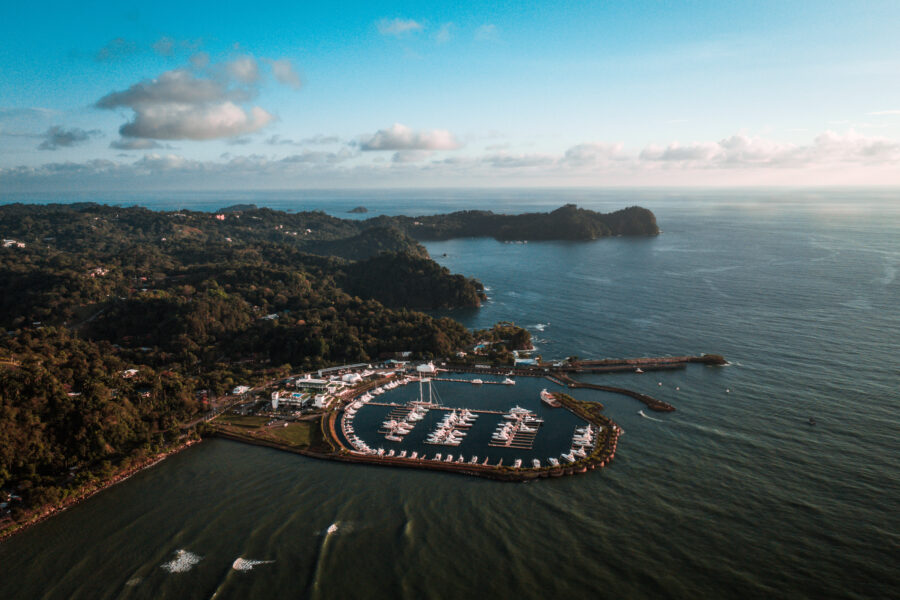
Quepos began as a banana port town in the early 20th century. The United Fruit Company established operations here, shaping the town’s development and economy. After the disease affected banana crops in the 1950s, the region shifted to palm oil production, which remains essential today.
The town’s name comes from the Quepo indigenous tribe that inhabited the area. Their presence dates back centuries before European colonization, though sadly, little of their culture remains visible today.
Manuel Antonio’s history is more recent and tied to tourism. The national park was established in 1972 to protect the area’s incredible biodiversity from development.
Before becoming a protected area, much of Manuel Antonio was privately owned land. The park’s creation marked a turning point, transforming the area from a remote coastal region to one of Costa Rica’s most visited tourist destinations.
Manuel Antonio National Park
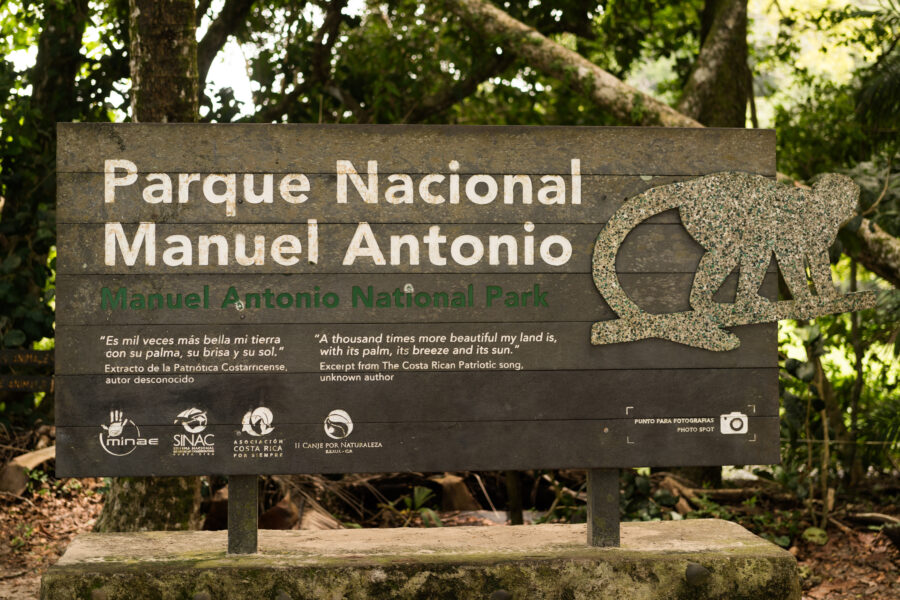
Manuel Antonio National Park is one of Costa Rica’s crown jewels, offering visitors an incredible blend of pristine beaches, lush rainforest, and wildlife viewing opportunities. Despite being one of the country’s smallest national parks, it has remarkable biodiversity and stunning natural beauty that draws nature lovers worldwide.
Flora and Fauna

The park’s ecosystem is teeming with wildlife. You’ll likely spot several of the park’s resident white-faced capuchin monkeys swinging through the trees – they’re known for being quite bold around visitors! The lovable three-toed sloths are another major attraction, though you might need a guide’s trained eye to spot them lounging in the canopy.
Bird enthusiasts will be thrilled by the colorful toucans, scarlet macaws, and countless other tropical species that call the park home. The forest floor hosts fascinating creatures, too, from tiny poison dart frogs to curious coatis roaming about.
The plant life is equally impressive, with towering ceiba trees, strangler figs, and countless bromeliads creating a lush jungle atmosphere. During certain seasons, vibrant blooms add splashes of color throughout the forest trails.
Conservation Efforts

Due to its popularity, Manuel Antonio faces unique conservation challenges. The park limits daily visitors to reduce environmental impact and protect delicate ecosystems. This system has proven effective in balancing tourism with preservation goals.
Rangers actively monitor wildlife to prevent feeding or harassment by visitors. This protection has allowed populations of endangered species to stabilize within park boundaries. Educational programs teach visitors about conservation while creating advocates for environmental protection.
Climate change presents new challenges, with rising temperatures affecting some sensitive species. Park officials work with researchers to track these changes and develop adaptation strategies. Reforestation projects help connect wildlife corridors beyond park boundaries.
Local communities participate in conservation through sustainable tourism initiatives and environmental education programs. This collaborative approach recognizes that protecting Manuel Antonio requires the efforts of visitors, locals, and authorities working together.
Visitor Information
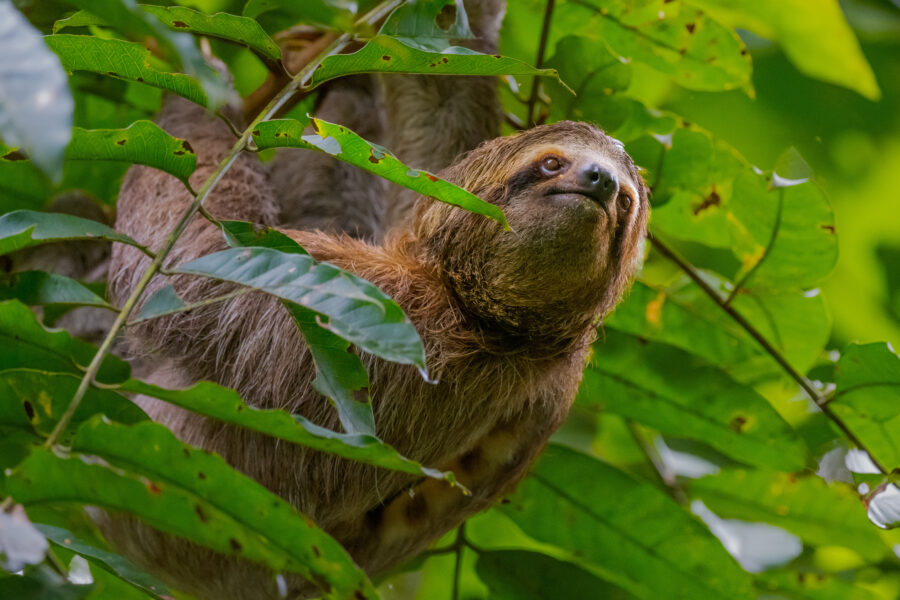
The park is open Tuesday through Sunday, 7 am to 4 pm, and closed on Mondays. It’s worth arriving early to beat the crowds and increase your chances of spotting wildlife! Tickets can be purchased online in advance—a smart move during high season when daily visitor caps are often reached.
Hiring a local guide is highly recommended. These knowledgeable guides can spot camouflaged animals you’d likely miss and share fascinating information about the park’s ecology. Most guides bring spotting scopes to get amazing close-up views of wildlife.
Several well-maintained trails wind through the park, ranging from easy walks to more challenging hikes. The main trail leads to Manuel Antonio Beach, a picture-perfect stretch of sand where visitors can swim. Pack water, sun protection, and insect repellent – the tropical climate can be intense!
Remember to leave no trace and follow all park rules. Food must be secured to prevent wildlife encounters, as the monkeys can be pretty mischievous around unattended snacks.
See Related: Best Vacation Destinations for Singles Over 40
Beaches of Manuel Antonio

Manuel Antonio offers some of the most spectacular beaches in Costa Rica. The area is known for its pristine white sand shores, crystal-clear waters, and diverse marine life along the Pacific Coast.
Manuel Antonio Beach

Manuel Antonio Beach (Playa Manuel Antonio) is the crown jewel of the region’s coastline. It’s nestled inside Manuel Antonio National Park, so you must pay the park entrance fee.
This beach is protected by a horseshoe-shaped bay that creates calm waters perfect for swimming. Unlike Playa Espadilla, Manuel Antonio Beach doesn’t have strong rip tides, making it safer for families with children.
The beach is framed by lush jungle, attracting wildlife to the shore’s edge. While relaxing on the sand, don’t be surprised to spot monkeys, sloths, and colorful birds.
The water clarity here also makes it an excellent spot for snorkeling, where you can observe tropical fish just offshore. For the best experience, visit before the beach gets crowded with other park visitors.
Activities and Water Sports

The beaches of Manuel Antonio offer numerous activities beyond just sunbathing. Playa Espadilla, the longest beach in the area, is perfect for surfing with consistent waves that appeal to beginners and intermediate surfers.
For underwater exploration, several operators offer scuba diving excursions to nearby reefs. These dives reveal colorful coral formations and marine life, including:
- Tropical fish
- Rays
- Sea turtles
- Occasional dolphin sightings
Kayaking tours around the coastline provide a different perspective of the beaches and cliffs. Many tours paddle through mangroves or to secluded beaches only accessible by water.
Stand-up paddleboarding has become increasingly popular, especially in the calmer morning waters. Fishing charters also depart from nearby Quepos Marina for those interested in catching mahi-mahi, tuna, or marlin.
Beach volleyball courts on Playa Espadilla offer a fun way to be active while enjoying the beach atmosphere.
Conservation and Cleanliness
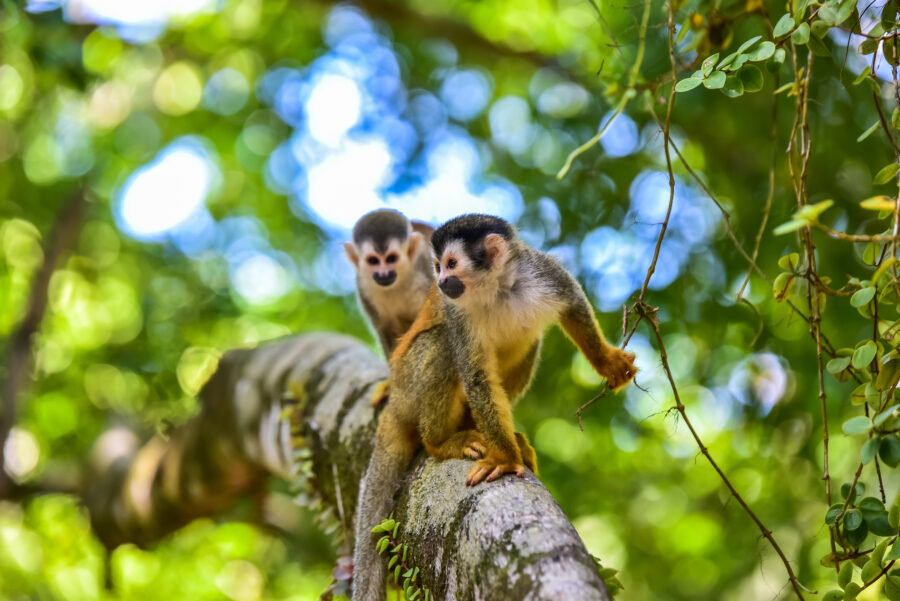
Strong conservation efforts benefit the beaches in Manuel Antonio. Manuel Antonio National Park strictly enforces rules to maintain the pristine condition of its beaches, including no food inside certain areas to prevent wildlife interactions.
Beach cleanup initiatives run regularly, often organized by local hotels and tour operators. TripAdvisor said these efforts have helped Manuel Antonio earn recognition as one of the world’s top beaches (#17).
Water quality monitoring ensures the beaches remain safe for swimming. The Blue Flag Ecological Program has certified several beaches to meet high environmental and safety standards.
Visitors should note these essential conservation guidelines:
- No feeding wildlife
- Pack out all trash
- Use only biodegradable sunscreen
- Stay on marked trails when accessing beaches
Despite high tourism numbers, these conservation efforts have successfully preserved the natural beauty that makes Manuel Antonio’s beaches special.
Accommodation and Dining
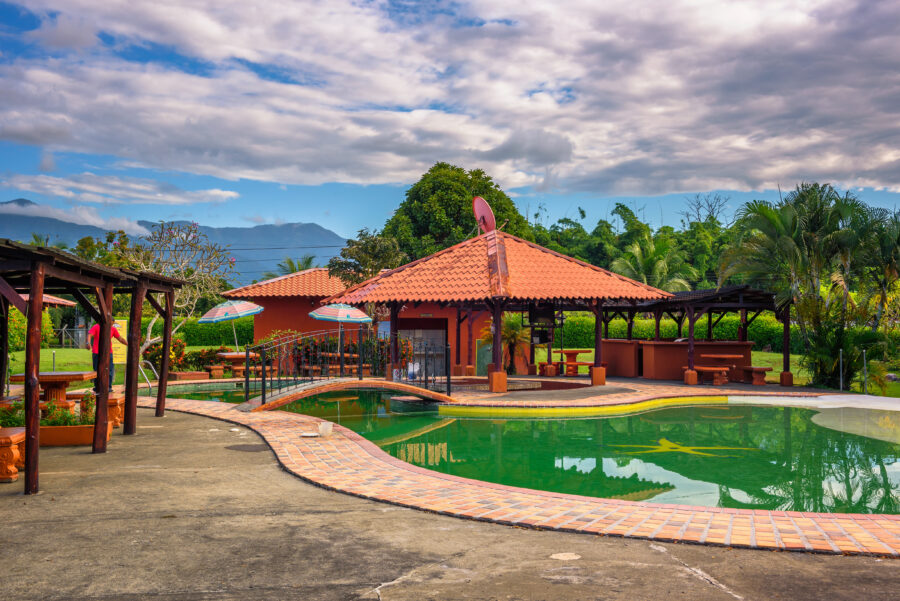
Where you stay and eat can make or break your Costa Rican experience. Quepos and Manuel Antonio offer distinct options for travelers with different preferences and budgets.
Hotels and Resorts
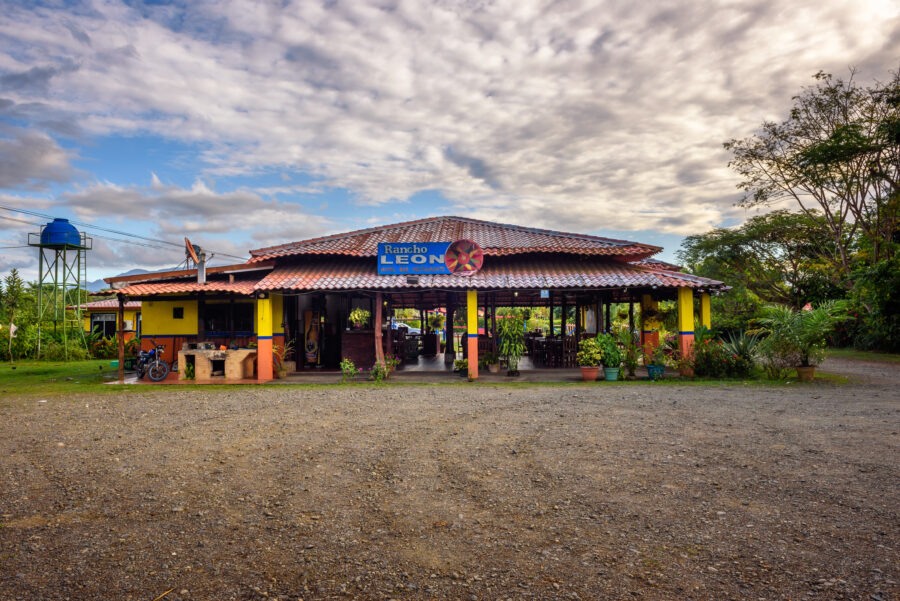
Manuel Antonio boasts a range of upscale accommodations with stunning ocean views. Luxury resorts perch on hillsides, offering panoramic vistas of the Pacific and surrounding jungle. Many feature infinity pools, spa services, and shuttle transportation to Manuel Antonio Beach.
Quepos, meanwhile, provides more budget-friendly options. The town has several modest hotels and hostels that offer clean, comfortable rooms without the premium price tag of Manuel Antonio. These places tend to be more authentic and less touristy.
For families, Manuel Antonio’s all-inclusive resorts make vacation planning simple with on-site restaurants and activities. Solo travelers might prefer Quepos’ smaller hotels, where connecting with locals and fellow tourists is easier.
Most accommodations in both areas offer air conditioning – a welcome relief from Costa Rica’s humidity!
Local Cuisine and Restaurants
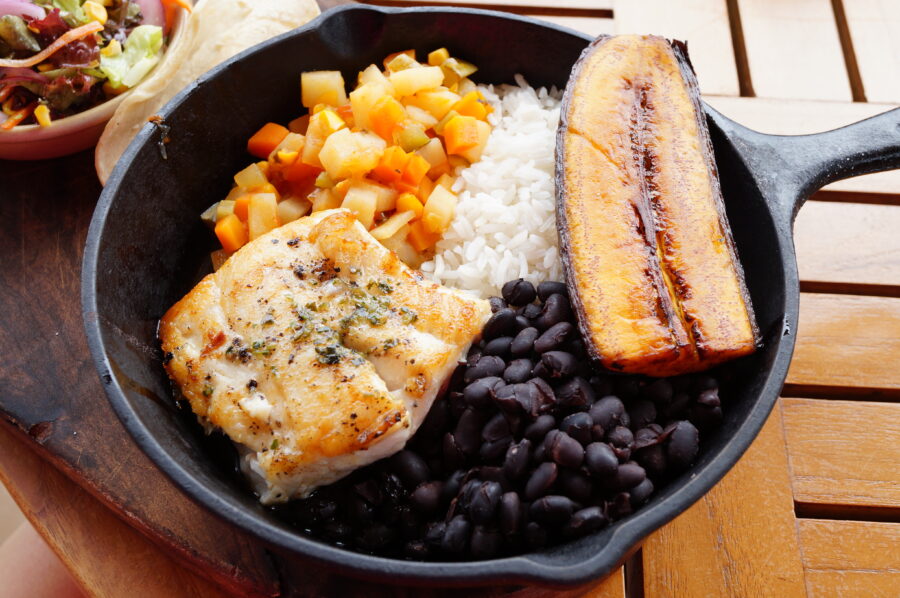
Dining options reflect the character of each location. Manuel Antonio caters to international tourists with upscale restaurants serving fusion cuisine and familiar favorites with Costa Rican flair.
Quepos offers a more authentic food scene. Local sodas (small family-run restaurants) offer traditional Costa Rican dishes like casado—a plate of rice, beans, plantains, and your choice of protein. These meals typically cost half what you’d pay in Manuel Antonio.
Thanks to their coastal positions, seafood shines in both locations. Fresh-caught fish, ceviche, and grilled shrimp appear on most menus.
Many restaurants in Manuel Antonio feature romantic ocean-view dining, while Quepos offers lively spots where locals gather. Street food in Quepos provides delicious, inexpensive options for travelers wanting to experience authentic flavors.
Breakfast With a View

Morning meals deserve special mention in this region. Many hotels in Manuel Antonio serve breakfast on terraces offering spectacular views of the coastline and jungle.
Watching the mist rise over the rainforest while sipping Costa Rican coffee creates unforgettable moments. Some accommodations include breakfast in their rates, featuring tropical fruits, gallo pinto (rice and beans), and fresh juices.
In Quepos, breakfast spots focus on hearty, affordable meals that fuel your day’s adventures. Local bakeries produce fresh pastries daily, and family restaurants serve traditional Costa Rican breakfast early in the morning. For the ultimate experience, seek out restaurants with outdoor seating where monkeys and tropical birds might visit during your meal, prevalent in properties near Manuel Antonio National Park.
See Related: The Best Affordable Destinations to Visit That Feel Like Luxury
Tourism Dynamics

Quepos and Manuel Antonio show distinct tourism patterns throughout the year. Visitor experiences differ significantly between these neighboring destinations, with Manuel Antonio attracting nature lovers and Quepos serving more as a functional hub with its fishing town roots.
Peak and Off-Peak Seasons
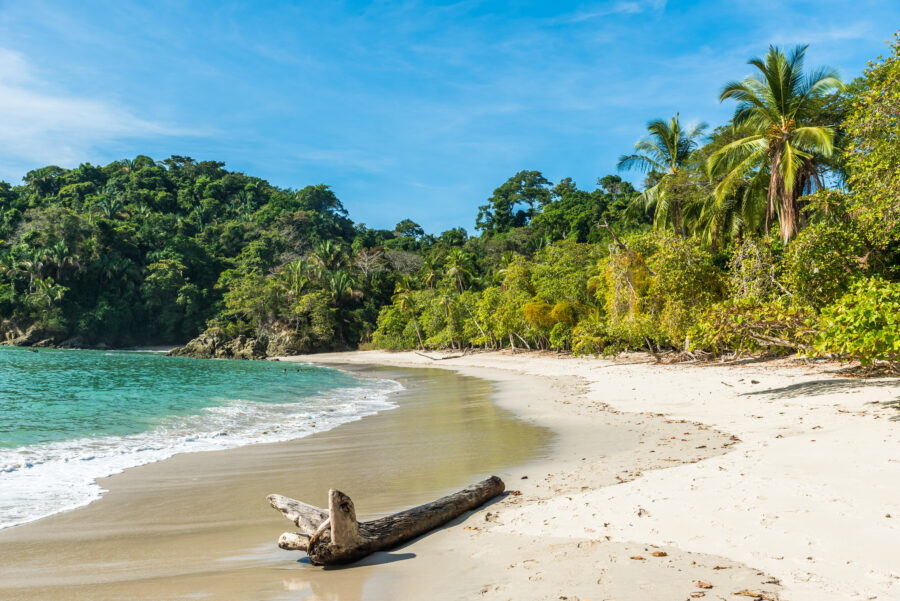
The tourism flow in the Quepos-Manuel Antonio area follows predictable seasonal patterns. From December through April, the high season, visitors flock to enjoy dry, sunny weather and perfect beach conditions. Hotel rates spike during this period, sometimes doubling compared to off-peak prices.
The rainy season (May through November) brings fewer tourists but offers unique advantages. You’ll find better deals, less crowded beaches, and lush, vibrant landscapes. Many travelers prefer visiting during this “green season” for the dramatic afternoon thunderstorms and wildlife viewing opportunities.
Unlike Tamarindo to the north, which maintains steady tourism year-round, Manuel Antonio experiences more dramatic seasonal fluctuations. Weekends and holidays bring domestic tourists from San José, creating mini-peak periods even during rainy times.
Cultural Interactions
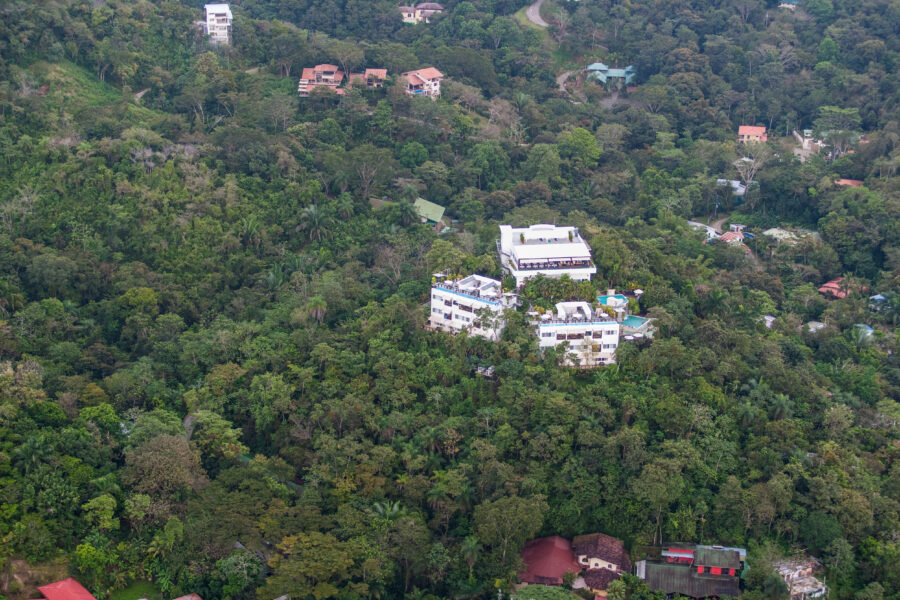
Manuel Antonio provides limited authentic cultural experiences, as most establishments cater to foreign tourists. The area has developed primarily as a vacation destination rather than maintaining strong local traditions.
Quepos, however, offers more genuine cultural interactions. The town’s central market, local seafood restaurants, and working marina provide glimpses into everyday Costa Rican life. On Saturday mornings, farmers’ markets showcase local produce and crafts while providing opportunities to chat with residents.
Many locals work in tourism-related jobs, creating a unique cultural dynamic. While some worry about the region’s “Americanization,” community efforts preserve Costa Rican traditions through food festivals, dance performances, and local celebrations that tourists can participate in.
Economic Impact
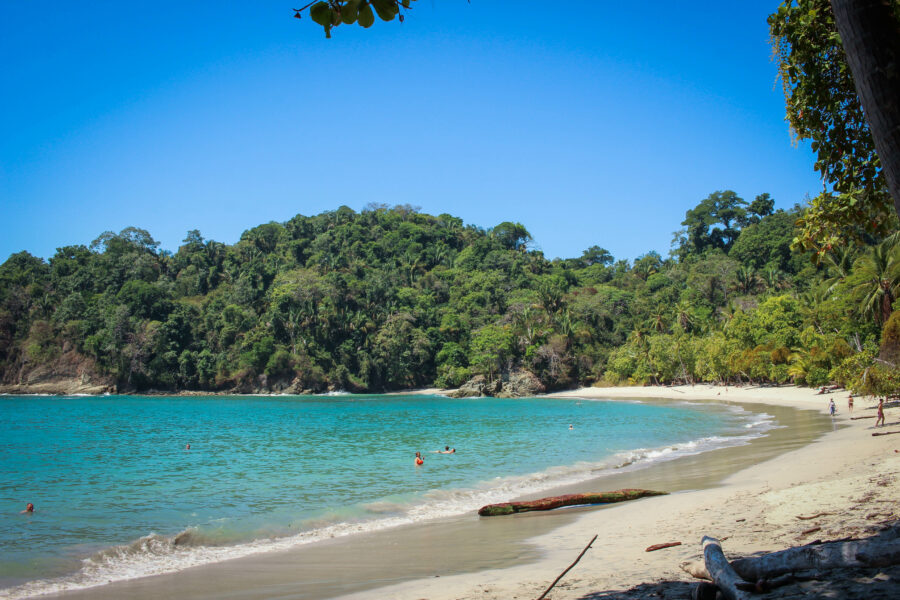
Tourism drives the economic engine of both Quepos and Manuel Antonio. The industry employs thousands of locals in hotels, restaurants, tour companies, and transportation services. Manuel Antonio focuses on higher-end tourism with luxury resorts and exclusive experiences.
Quepos maintains a more diversified economy. The fishing industry remains important alongside tourism, with the marina hosting commercial fishing boats and sport fishing charters. This economic diversity provides some stability during tourism downturns.
Property values tell an interesting story. Manuel Antonio real estate commands premium prices, especially for ocean-view properties. Meanwhile, Quepos offers more affordable housing for workers who support the tourism infrastructure.
Small business development has accelerated in recent years. Local entrepreneurs have opened restaurants, souvenir shops, and tour companies to capture tourism dollars while adding unique Costa Rican character to the visitor experience.
Planning Your Visit

When visiting this area of Costa Rica, good planning can make your trip much smoother. The difference between a stressful vacation and an amazing one often comes down to timing, transportation, and knowing what to expect.
Best Time to Visit
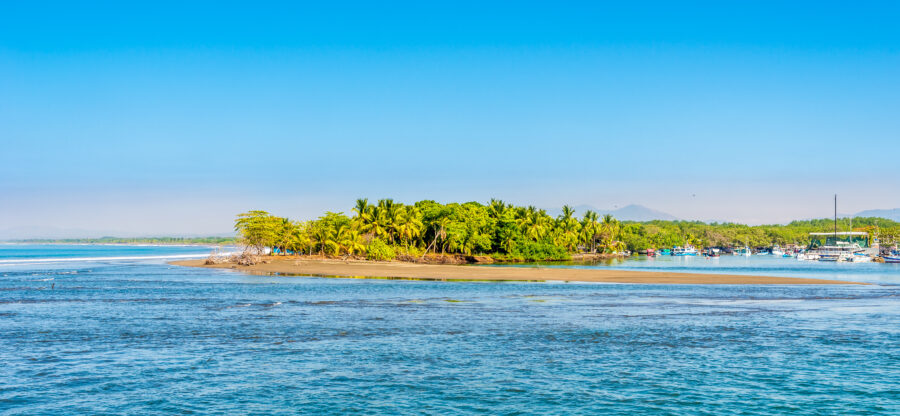
The driest weather in Manuel Antonio and Quepos runs from mid-November through mid-April. This dry season offers sunny days perfect for beach activities and wildlife spotting. However, this is also peak tourist season, so expect higher prices and crowds.
The green season (May to November) brings afternoon showers but fewer tourists. Many locals prefer this time because the landscape turns lush and vibrant. Mornings typically stay clear, giving you plenty of time for activities before afternoon rain.
Wildlife viewing is excellent year-round. During their migration patterns, whales can be spotted from December to April and again from July to November.
If you’re on a budget, consider visiting during “shoulder seasons” (May-June or November). You’ll find better deals on accommodations while still enjoying relatively good weather.
Getting Through
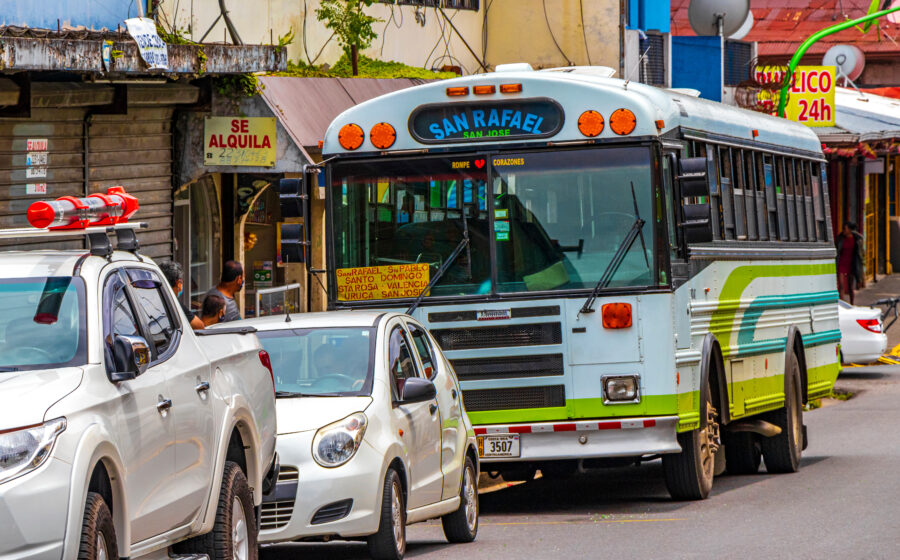
Quepos and Manuel Antonio are easily accessible from San José, Costa Rica’s capital. The drive takes about 3 hours on well-maintained highways. Many visitors rent cars for flexibility, though car hire options vary in price depending on the season.
Public buses offer an affordable alternative, running regularly from San José to Quepos. The bus journey takes around 3.5 hours and costs about $8-10 one-way.
For those preferring quicker transport, domestic flights operate between San José and Quepos airport. The flight takes only 20 minutes, though it’s considerably more expensive than bus travel.
From Quepos, it’s just a 15-minute drive to Manuel Antonio. Regular shuttle buses run between the two areas throughout the day, making it easy to stay in one location and visit the other.
Local Transportation
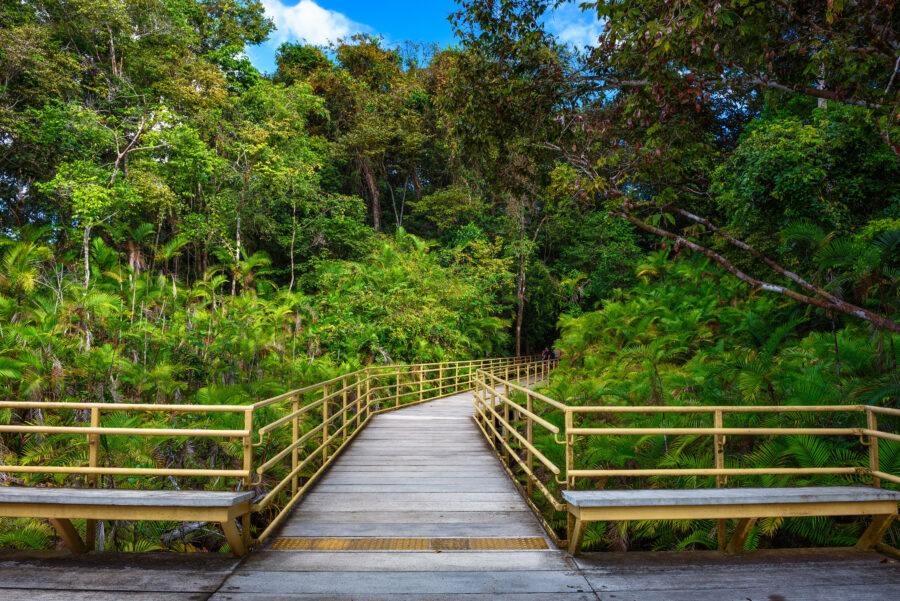
Getting around the Quepos/Manuel Antonio area is relatively straightforward. Public buses run between Quepos and the Manuel Antonio National Park entrance every 30 minutes. The fare is less than $1 each way, making this the most budget-friendly option.
Taxis are readily available and relatively affordable for short trips. A ride from Quepos to Manuel Antonio typically costs $8-10. Always ensure that taxis use their meters or agree on the fare before departing.
Parking can be challenging near Manuel Antonio National Park, especially during high season. If driving, arrive early to secure a spot. Some hotels offer shuttle services to the park, eliminating parking worries.
For adventurous travelers, renting a scooter provides flexibility for exploring the winding coastal roads. Many tour companies also offer transportation as part of their excursion packages, which can be a convenient option for day trips.
See Related: Tamarindo vs Manuel Antonio: Key Differences to Know Before Booking Your Costa Rica Beach Vacation
Frequently Asked Questions
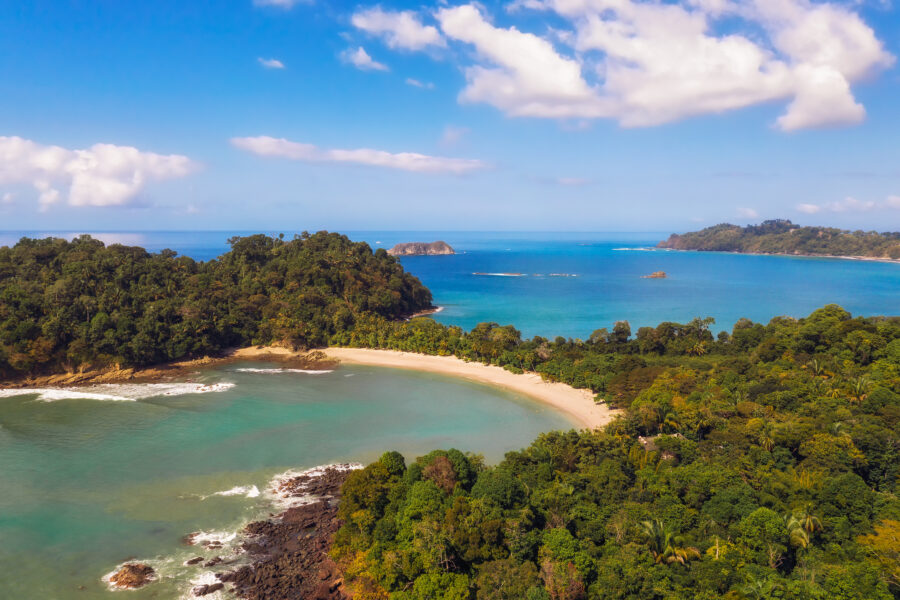
Travelers often have specific questions when deciding between Quepos and Manuel Antonio. These questions touch on safety, accommodations, and each location’s unique experiences.
What are the unique differences between Quepos and Manuel Antonio for travelers?
Quepos is the main town with local amenities, markets, and an authentic Costa Rican vibe. It serves as a hub for fishing charters and offers glimpses into everyday Costa Rican life.
On the other hand, Manuel Antonio focuses on tourism with its famous national park, beautiful beaches, and upscale resorts. The area features stunning ocean views from its hillside locations and has more restaurants catering to international visitors.
The distance between the two is only a few miles – about a $5 cab ride. Many travelers visit both areas during their stay.
How does the safety in Manuel Antonio compare to Quepos for tourists?
Tourists generally consider Manuel Antonio safer than Quepos. The tourist-focused area has more security presence and well-lit pathways near major hotels and restaurants.
Quepos has some areas that require additional caution, particularly at night. As with many towns that serve as transportation hubs, specific neighborhoods have higher crime rates than the tourist zones. Savvy travelers take the same precautions in both areas: they do not display valuables, stay aware of their surroundings, and use reputable transportation options.
What are the top accommodations in Manuel Antonio that are outside standard hotels?
Eco-lodges nestled in the rainforest offer unique stays with wildlife viewing opportunities right from private balconies. These accommodate various budgets while providing authentic jungle experiences.
Vacation rentals and villas perched on hillsides provide stunning ocean views and privacy. Many include pools and outdoor living spaces perfect for families or groups.
Boutique hotels blending luxury with sustainability have become increasingly popular. These smaller properties typically offer personalized service and unique architectural designs that complement the natural surroundings.
Can you provide insights on the nighttime safety for visitors staying in Quepos?
Evening safety in Quepos requires some extra awareness. The main downtown area has adequate lighting and police presence, especially near tourist establishments.
Using taxis after dark rather than walking is advisable, particularly when heading to outlying areas. Ask your hotel to call reputable taxi services rather than hailing them on the streets.
Keep valuables secure and maintain awareness of your surroundings. Many travelers find Quepos perfectly safe when exercising standard precautions, though solo travelers should be especially mindful.
What lesser-known attractions should one consider visiting instead of Manuel Antonio?
Nauyaca Waterfalls offers magnificent twin cascades with swimming areas without the national park crowds. The horseback ride option to reach them adds to the adventure.
The mangrove tours near Damas Island showcase a different ecosystem with unique wildlife viewing opportunities. Visitors often spot monkeys, crocodiles, and numerous bird species.
Local fishing charters from Quepos Marina provide authentic experiences with local captains. These trips often include the chance to catch dinner and see marine wildlife.
Is it recommended that one base oneself in Quepos for an authentic Costa Rican experience?
Yes, Quepos provides a more authentic Costa Rican experience than Manuel Antonio. The town has local markets, regional eateries serving traditional food, and fewer tourist-focused businesses.
Staying in Quepos allows visitors to observe everyday Costa Rican life, practice Spanish with locals, and experience cultural events that don’t always reach the more isolated resorts.
The cost of accommodations and meals in Quepos is generally lower than in Manuel Antonio. This makes extending stays easier and immersing in the pura vida lifestyle that defines Costa Rica.
